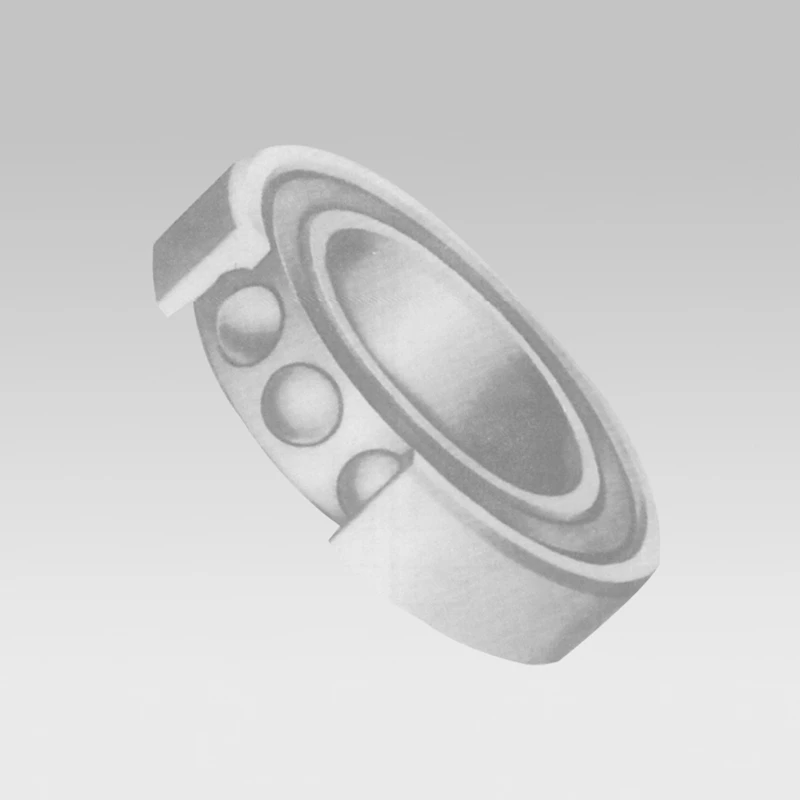
Dec . 26, 2024 17:46 Back to list
Design Considerations for Tapered Roller Bearings in Mechanical Engineering Applications
Design Considerations for Taper Roller Bearings
Taper roller bearings are a fundamental type of rolling-element bearing that are widely used in various applications due to their ability to support both radial and axial loads. The design of taper roller bearings incorporates several important factors that enhance their performance, reliability, and lifespan. This article will explore the key design considerations involved in taper roller bearing construction.
1. Basic Structure
A typical taper roller bearing consists of an inner ring, an outer ring, rolling elements (taper rollers), and a cage. The rollers are shaped like truncated cones, which allows them to accommodate axial loads while also supporting radial loads. This unique geometry is crucial for ensuring that the load distribution is even across the rollers, minimizing stress concentrations that could lead to early failure.
2. Load Capacity
One of the most critical elements in the design of taper roller bearings is their load capacity. The bearing should be designed to handle the maximum expected loads, which include both radial and axial components. The dynamic load rating (C) and the static load rating (C0) are essential parameters that define the bearing's ability to endure these loads without failing. Designers must consider factors such as the material properties, surface finish, and the lubrication method used when calculating load capacity.
3. Geometry and Contact Angle
The contact angle of taper roller bearings significantly influences their performance characteristics. A larger contact angle allows the bearing to better handle axial loads; however, it may also reduce the radial load capacity. Conversely, a smaller contact angle improves radial load capacity but compromises axial load handling. Therefore, designers must carefully select the contact angle based on the specific application requirements. In many cases, an optimal balance between radial and axial performance is sought.
4
. Material Selection
taper roller bearing design

Material selection is another pivotal aspect of taper roller bearing design. Common materials include high-carbon chromium steel, which offers excellent hardness and wear resistance. In specialized applications, designers may opt for ceramic or advanced metal matrix composites. The chosen material should not only withstand the operating loads but also resist fatigue, corrosion, and temperature variations. Additionally, the manufacturing process can significantly impact the material properties, so thorough quality control measures are necessary.
5. Lubrication
Proper lubrication is vital for the performance and longevity of taper roller bearings. The design must consider the lubrication method—whether it be grease, oil, or a solid lubricant. Lubrication should minimize friction, reduce wear, and prevent overheating. The choice of lubricant will depend on factors such as operating temperature, speed, and environment. Seals and shields may also be included in the design to retain lubricant and keep contaminants out, further enhancing bearing life.
6. Manufacturing Precision
Precision in manufacturing is crucial for taper roller bearings. The geometry of the rollers and raceways must be fabricated with high accuracy to ensure optimal contact and load distribution. Any deviations could lead to increased friction and premature failure. Modern manufacturing techniques, including CNC machining and advanced surface treatment methods, play a significant role in achieving the necessary tolerances and surface finishes.
7. Applications
Taper roller bearings are employed in a variety of applications, including automotive transmissions, machine tool spindles, and railway wheelsets. Each application may impose unique requirements, such as speed, load conditions, and environmental concerns. Therefore, the design of taper roller bearings must be adaptable, allowing engineers to tailor specifications to meet specific needs.
Conclusion
The design of taper roller bearings is a complex process that requires careful consideration of several key factors, including load capacity, geometry, material selection, lubrication, and manufacturing precision. By addressing these aspects effectively, engineers can enhance the performance and reliability of these essential components in various high-load applications. As technology continues to evolve, ongoing research and development will undoubtedly lead to innovations that further improve the design and functionality of taper roller bearings, ensuring their continued relevance in modern engineering.
Latest news
-
Grooved Ball Bearing Design and Functionality
NewsJun.04,2025
-
Concrete Mixer Bearing Load Capacity Testing
NewsJun.04,2025
-
6004 Bearing Dimensions in Robotic Joint Designs
NewsJun.04,2025
-
Advantages of Single-Row Deep Groove Ball Bearings
NewsJun.04,2025
-
Applications of Deep Groove Ball Bearings in Automotive Systems
NewsJun.04,2025
-
Innovations in Bearing Pressing Machine Design
NewsJun.04,2025
